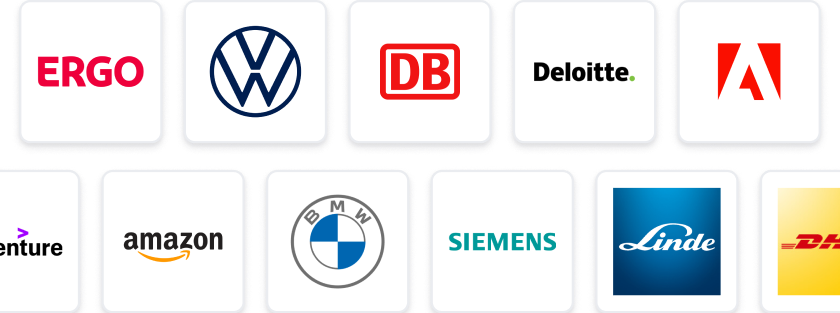At a Glance
- Tasks: Design and integrate high-performance powertrain systems for F1 cars.
- Company: Join a leading team pushing the boundaries of motorsport innovation.
- Benefits: Enjoy competitive pay, potential remote work, and unique industry perks.
- Why this job: Be part of a thrilling environment where your designs impact real-world racing performance.
- Qualifications: Bachelor’s in Mechanical or Automotive Engineering; F1 experience is a plus.
- Other info: Work with cutting-edge technology in a fast-paced, collaborative setting.
The predicted salary is between 43200 - 72000 £ per year.
Mechanical Design Engineer - Powertrain/Power Unit Integration
This is an exciting opportunity to contribute to the cutting-edge design and integration of systems that push the limits of performance and innovation in Formula 1.
Key Responsibilities:- Powertrain/Power Unit Integration Design: Design and integrate high-performance powertrain/power unit systems (engine, transmission, hybrid/electric) into the F1 car architecture. Collaborate closely with other engineering teams to ensure seamless integration and optimise vehicle performance. Assist in testing and validation of powertrain systems, ensuring high reliability.
- Suspension, Steering, and Brakes Design: Design and optimize suspension, steering, and braking systems to meet the specific demands of Formula 1 racing. Work alongside other engineering teams to ensure integration with powertrain and other vehicle systems.
- Bachelor’s degree in Mechanical Engineering, Automotive Engineering, or a related field.
- Proven experience in designing and integrating powertrain, suspension, steering, and braking systems in high-performance vehicles, preferably in motorsport (F1 experience a plus).
- Strong proficiency in either CATIA or NX CAD software.
- Deep understanding of the dynamic behaviour of powertrain systems, suspension, steering, and braking components in motorsport applications.
- Ability to perform simulations and validate designs in high-performance, high-stress environments.
- Experience working within the constraints of tight deadlines and high-performance targets typical of Formula 1 development.
- Excellent problem-solving and communication skills, with the ability to collaborate across multi-disciplinary teams.
- Hands-on experience in F1 or other motorsport vehicle design and development.
- Expertise in simulation tools integrated within CATIA/NX.
Mechanical Design Engineer (Powertrain) - F1 employer: XQ Technical
Contact Detail:
XQ Technical Recruiting Team
StudySmarter Expert Advice 🤫
We think this is how you could land Mechanical Design Engineer (Powertrain) - F1
✨Tip Number 1
Network with professionals in the motorsport industry, especially those who have experience in F1. Attend relevant events, workshops, or seminars where you can meet engineers and team members from F1 teams. Building these connections can provide valuable insights and potentially lead to job referrals.
✨Tip Number 2
Familiarise yourself with the latest trends and technologies in powertrain systems and vehicle dynamics specific to Formula 1. Follow industry news, read technical papers, and engage in online forums to stay updated. This knowledge will not only enhance your understanding but also demonstrate your passion for the field during interviews.
✨Tip Number 3
Consider participating in motorsport-related projects or competitions, such as Formula Student or similar engineering challenges. These experiences can showcase your practical skills and commitment to the field, making you a more attractive candidate for the Mechanical Design Engineer role.
✨Tip Number 4
Prepare for technical interviews by practising problem-solving scenarios related to powertrain integration and vehicle dynamics. Be ready to discuss your previous projects and how you overcame challenges in high-pressure environments. This preparation will help you stand out as a knowledgeable and capable candidate.
We think you need these skills to ace Mechanical Design Engineer (Powertrain) - F1
Some tips for your application 🫡
Tailor Your CV: Make sure your CV highlights relevant experience in mechanical design, particularly in powertrain and suspension systems. Emphasise any previous work in motorsport or high-performance vehicles, and showcase your proficiency in CATIA or NX CAD software.
Craft a Compelling Cover Letter: Write a cover letter that specifically addresses the key responsibilities and requirements outlined in the job description. Explain how your background and skills make you a perfect fit for the role, and express your passion for Formula 1 and engineering innovation.
Showcase Relevant Projects: If you have worked on projects related to powertrain integration or suspension design, include these in your application. Provide details about your role, the challenges faced, and the outcomes achieved to demonstrate your hands-on experience.
Proofread and Edit: Before submitting your application, carefully proofread all documents for spelling and grammatical errors. Ensure that your application is clear, concise, and professional, as attention to detail is crucial in engineering roles.
How to prepare for a job interview at XQ Technical
✨Showcase Your Technical Knowledge
Be prepared to discuss your experience with powertrain systems, suspension, steering, and braking designs. Highlight specific projects where you used CATIA or NX CAD software, and be ready to explain the challenges you faced and how you overcame them.
✨Demonstrate Team Collaboration
Since this role involves working closely with other engineering teams, share examples of how you've successfully collaborated in the past. Discuss any multi-disciplinary projects you've been part of and how you contributed to achieving common goals.
✨Prepare for Problem-Solving Scenarios
Expect to face technical questions that assess your problem-solving skills. Prepare by reviewing common issues in powertrain integration and think through how you would approach these challenges in a high-performance environment like F1.
✨Understand the F1 Environment
Familiarise yourself with the unique demands of Formula 1 racing. Be ready to discuss how tight deadlines and high-performance targets influence design decisions, and show your passion for motorsport and innovation in your responses.
